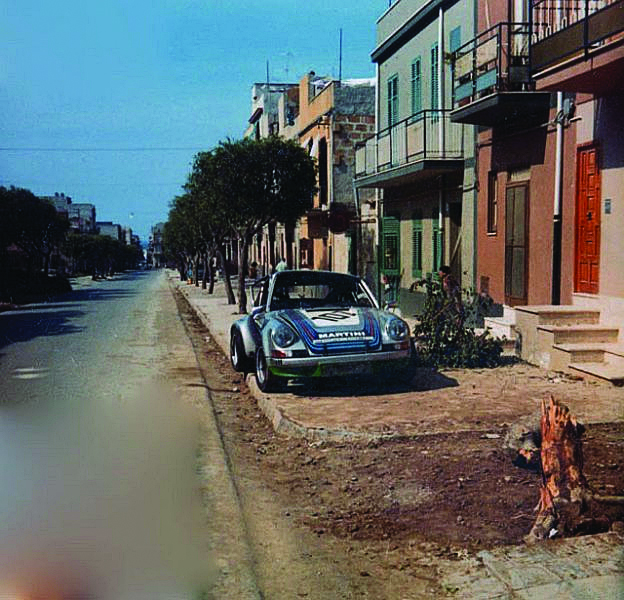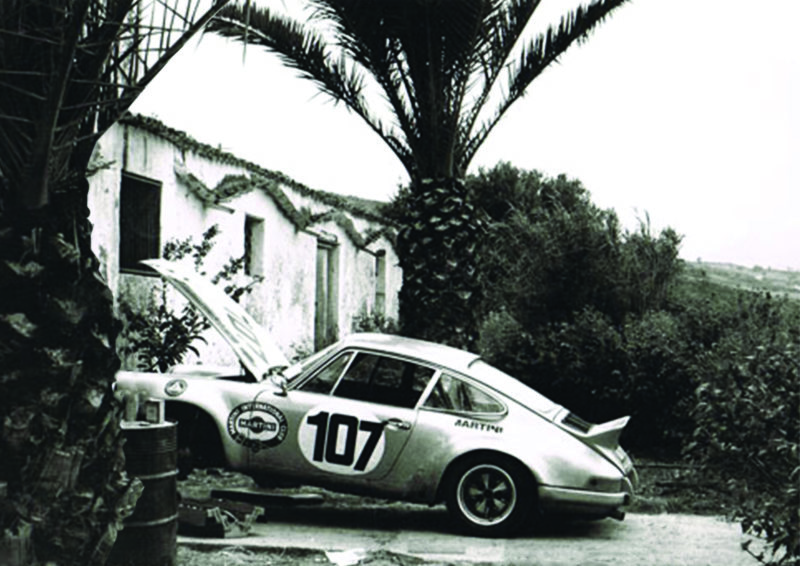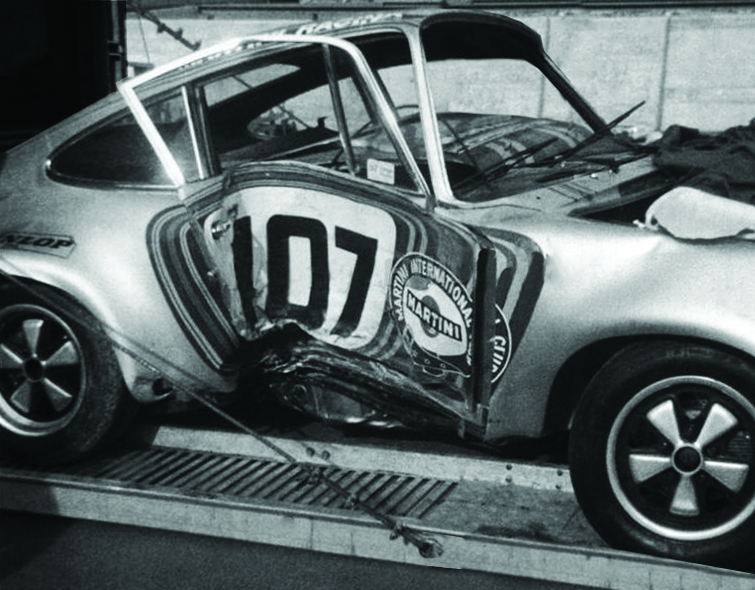Targa Florio 1973: the untold story
It was a warm, early evening on Sicily, and Campofelice, a small town on the northern coast, came at just the right time for a much-needed caffeine hit. I’d recently arrived with my photographer and partner, Iris, to research the 1973 Targa Florio race.
Leaving the café on Campofelice’s main street, a double espresso keeping sleep at bay, we caught sight of a painting in the window of a little gallery across the road.
It appeared to be a Porsche 911 sitting in a tree. We were intrigued and, crossing over for a closer look, identified it as an RSR. Rather than sitting in the tree, the car appeared to have been wrapped around it – and at some speed. But 911s getting wrapped around trees is, unfortunately, nothing new. Why should this image have pride of place in a gallery here?

Had it been open we would have enquired about the background to the picture, but the place was shut up and gave no indication of opening hours. We were due to visit the town again the following day to check out its Targa Florio museum, so I made a mental note to call back then.
Iris knew little about the Targo Florio before this trip, and we talked as we drove on about why the 1973 race in particular is so inextricably linked to Porsche racing history.
The world’s oldest endurance motor race, conceived by Sicilian racing driver Vincenzo Florio in 1906, had by the mid-1920s become one of the most important races in Europe. Early events involved a circuit of the entire island, but by the time the race was incorporated into the FIA World Sports Car Championship in 1955, it had been shortened to 11 laps of the infamously unforgiving 45-mile Circuito Piccolo delle Madonie, in the Madonie mountain range.

The FIA decided that the 1973 race was to be the last, on the grounds of both driver and spectator safety, so whichever car and drivers won that race would be remembered as the Targa Florio’s eternal winners.
A year before that, in early 1972, Dr Ernst Fuhrmann had taken over day-to-day running of Porsche. He was committed to the 911, but realised it needed to be recognised as a successful racer, believing that track wins would translate into road car sales. Fuhrmann turned to Norbert Singer to develop a 911 that would be competitive on the track against more exotic names such as Ferrari and Alfa Romeo.
Singer’s team immediately began the 911 RSR project, tasked with being ready for the 1973 season. The plan was for a lightened shell stripped of creature comforts and engine capacity increased to 2,992cc, which would make the RSR the first 911 to break the 300 horsepower barrier. Fuhrmann’s Targa Florio target was a creditable showing in the 1973 race, but he realised this would be a big ask given the near-500 horsepower of the Ferrari 512 Ps and…
For the full, fascinating story on this little-known saga from the last ever Targa Florio race, pick up your copy of Total 911 issue 184 in shops now or get it delivered to your door via here. You can also download a digital copy with high definition bonus galleries to any Apple or Android device.

Comments (0)